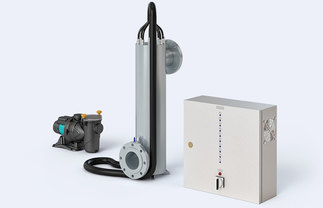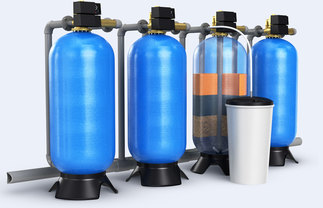Заключение
В воде плавательных бассейнов к настоящему времени выявлены порядка 100 ППО. Основными их прекурсорами являются биологические жидкости организма человека и разнообразные органические загрязняющие вещества, привносимые посетителями. В многочисленных исследованиях выявлена потенциальная токсичность ППО. Из числа ППО в настоящее время в ряде стран в воде плавательных бассейнов подлежат регулированию концентрации ТГМ и ГУК.
Соблюдение принятых на современном этапе нормативов может обеспечиваться при использовании традиционных методов обеззараживания воды (хлорирование, озонирование, УФ-обработка, использование смешанных оксидантов) при условии соблюдения правил посещения и эксплуатации бассейнов, особенно в период интенсивного их использования, например, во время соревнований.
В последние годы большое внимание уделяется азотсодержащим ПБО, присутствующим в воде плавательных бассейнов на уровне нг/л, но значительно более токсичным, нежели ТГМ и ГУК.
Особое беспокойство вызывают последствия хлорирования воды плавательных бассейнов, заполняемых морской водой, содержащей бромиды. В этом случае преимущественно образуются более токсичные бромированные ППО.
В результате продолжающихся эпидемиологических исследований нормативы содержания ППО в воде могут быть ужесточены и расширен перечень ППО, концентрации которых подлежат регулированию. В случае питьевой воды эти проблемы, вероятно, будут решаться в основном внедрением схем удаления из исходной воды прекурсоров ППО. В воде плавательных бассейнов главными прекурсорами ППО являются биологические жидкости организма человека и привносимые посетителями загрязняющие вещества. Для удаления этих прекурсоров необходим строгий контроль соблюдения правил посещения бассейна (прежде всего предварительного мытья в душе) и эксплуатации его технологического оборудования.
Автор статьи: Кофман Владимир Яковлевич
Список литературы
- Mirel I., Pentia D., Florescu C., Ionescu D. Water treatment from swimming pool, piscine and swimming basins/ Scientific Bulletin of Politechnica University of Timisoara. 2015, v. 60, no. 2, p. 79-83.
- Hrudey S.E., Chlorination disinfection by-products, public health risk tradeoffs and me. Water Research. 2009, 43, 2057-2093.
- Harris R., Page T. The implication of cancer-causing substances in the Mississippi river waters. 1974. Environmental Defence Fund, Washington, D.C.
- Rook J.J. Formation of haloforms during chlorination of natural waters // Water Treatment and Examination. 1974. 23. 234-243.
- Chowdhury S., Alhooshani K., Karanfil T. Disinfection byproducts in swimming pool: Occurences, implications and future needs// Water Research. 2014, 53, 68-109.
- Chang H.H., Tung H.H., Chao C.C., Wang G.S. Occurence of haloacetic acids (HAAs) and trihalomethanes (THMs) in drinking water of Taiwan // Environmental Monitoring and Assessment. 2010. 162. 237-250.
- Simard S., Tardif R., Rodriguez M. J. Variability of chlorination by-product occurence in water of indoor and outdoor swimming pools // Water Research. 2013. 47. 1763-1772.
- Kanan A., Karanfil T. Formation of disinfection by-products in indoor swimming pool water: The contribution from filling water natural organic matter and swimmer body fluids // Water Research. 2011. 45. 926-932.
- Hansen K.M.S., Willach S. et al. Particles in swimming pool filters – Does pH determine the DBP formation? // Chemosphere. 2012, 87 (3), 241-247.
- Bond T., Templeton M.R., Graham N. Precursors of nitrogen disinfection by-productrs in drinking water - A critical review // Journal of Hazardous Materials. 2012. 235-236. 1-16.
- Weng S., Blatchley III E.R. Disinfection by-products in a chlorinated indoor swimming pool under conditions of heavy use: National swimming competition // Water Research. 2011. 45. 5241-5248.
- Keuten M.G.A., Schets F.M., Schijven J.F., Verberk J.Q.J.C., van Dijk J.C. Definition and quantification of initial anthropogenic pollutant release in swimming pools // Water Research. 2012. 46. 3682-3692.
- Keuten M.G.A., Peters M.C.F.M., Daanen H.A.M. et al. Quantification of continual anthropogenic pollutants released in swimming pools// Water Research. 2014, 53, 259-270.
- Lee J., Ha K.-T., Zoh K.-D. Characteristic of trihalomethanes (THM) production and associated health risk assessment in swimming pool waters treated with different disinfection methods // Science of the Total Environment. 2009. 407 (6). 1990-1997.
- Применение смешанных оксидантов при дезинфекции воды в бассейнах и аквапарках // Вода и водоочистные технологии. 2013. 1. 70-71.
- Soltermann F., Widler T., Canonica S., von Gunten U. Photolysis of inorganic chloramines and efficiency of trichloramine abatement by UV treatment of swimming pool water// Water Research. 2014, 56, 280-291.
- Weng S., Li J., Blatchley III E.R. Effects of UV254 irradiation on residual chlorine and DBPs in chlorination of model organic-N precursors in swimming pools // Water Research. 2012. 46. 2674-2682. Lyon B.A., Cory R.M., Weinberg H.S. Changes in dissolved organic matter fluorescence and disinfection byproduct formation from UV and subsequent chlorination/chloramination// Journal of Hazardous Materials. 2014, 264, 411-419.
- Bond T., Huang J., Templeton M.R., Graham N. Occurence and control of nitrogenous disinfection by-products in drinking water - A review // Water Research. 2011. 45. 4341-4354.
- Goma A., Guisasola A., Taya C. et al. Benefits of carbon dioxide as pH reducer in chlorinated indoor swimming pools // Chemosphere. 2010. 80. 428-432.
- Parinet. J., Tabaries S., Coulomb B. Exposure levels to brominated compounds in seawater swimming pools treated with chlorine // Water Research. 2012. 46 (3). 828-836.
- Gondikas A.P., von der Kammer F., Reed R.B. et al. Release of TiO2 nanoparticles from sunscreens into surface waters: A one-year survey at the old danube recreation lake// Environmental Science and Technology. 2014, 48 (10), 5415-5422.
- Holbrook R.D., Motabar D., Quinones O. et al. Titanium distribution in swimming pooi water is dominated by dissolved species// Environmental Pollution. 2013. 181, 68-74.
- Santos A.J.M., Miranda M.S., da Silva J.C.G.E. The degradation products of UV filters in aqueous and chlorinated aqueous solutions. Water Research. 2012, 46, c. 3167-3176.
- Wang W., Qian Y., Boyd J.M. et al. Halobenzoquinones in swimming pool waters and their formation from personal care products // Environmental Science and Technology. 2013. 47 (7). 3275-3282.
- Xiao F., Zhang X., Zhai H. et al. New halogenated disinfection byproducts in swimming pool water and their permeability across skin // Environmental Science and Technology. 2012. 46 (13). 7112-7119.
- Sharma V.K., Zboril R., McDonald T.J. Formation and toxicity of brominated disinfection byproducts during chlorination and chloramination of water: A review/ Journal of Environmental Science and Health - Part B Pesticides, Food Contaminants, and Agricultural Wastes. 2014, 49 (3), 212-228.
- Jiang J.O. Wang S., Papangoulopoulos A. The role of potassium ferrate (VI) in the inactivation of Escherichia coli and in the reduction of COD for water remediation/ Desalination. 2007, 210, 266-273.
- Sharma V.K., Kazama F., Jiangyong H. et al. Ferrates as environmentally-friendly oxidants and disinfectants/ Journal of Water Health. 2005, 3, 45-48.
- Li Q., Mahendra S., Lyon D.Y. et al. Antimicrobal nanomaterials for water disinfection and microbial control: Potential applications and implications/ Water Research. 2008, 45, 4591-4602.
- Rabea E.I., Badawy M.E., Stevens C.V. et al. Chitosan as antimicrobial agent: applications and mode of action/ Biomacromolecules. 2003, 4 (6), 1457-1465.
- Gusseme B.D., Hennebel T., Christiaens E. et al. Virus disinfection in water by biogenic silver immobilized in polyvinylidene fluoride membranes/ Water Research. 2011, 45, 1856-1864.
- Lyon D.Y., Brown D.A., Alvarez P.J. Implication and potential applications of bactericidal fullerene water suspensions: effect of (nC60) concentration, exposure conditions and shelf life/ Water Science and Technology. 2008, 57 (10), 1533-1538.
- Brady-Estevez A.S., Kang S., Elimelech M. A single-walled carbon nanotube filter for removal of viral and bacterial pathogenes/ Small. 2007, 4 (4), 481-484.

